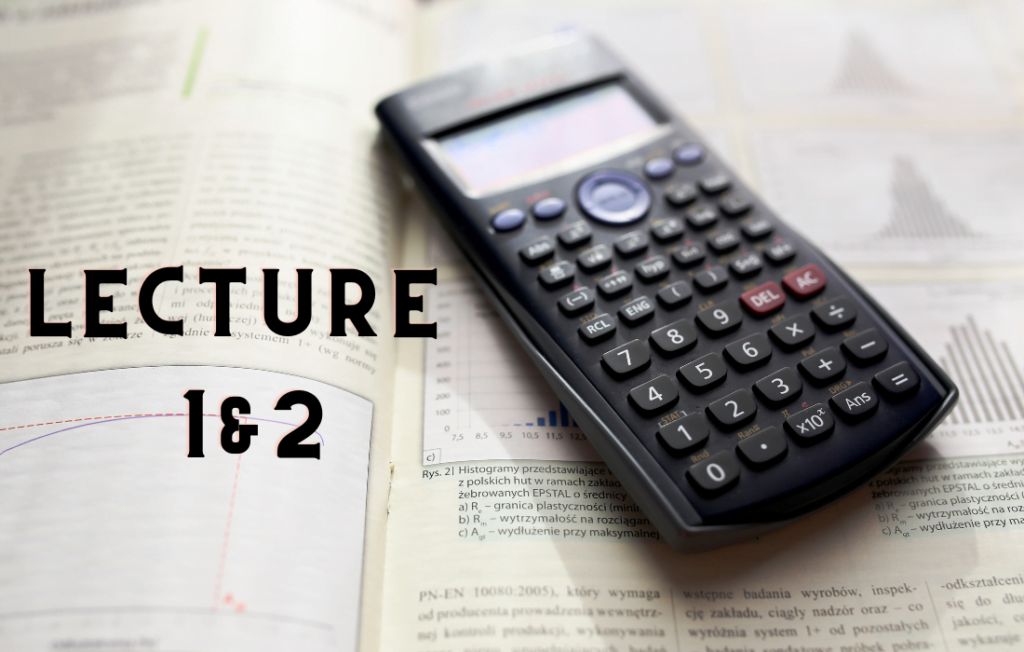lecture 1-2
Some basic terminology state ,process, path and cycle are important in statistical physics .
STATE : state it is a condition of a system with satisfy by its properties. (any two properties from PVT ).
PROCESS :process anything that a system undergoes from one equilibrium state to another equilibrium is called process .
PATH: path the ”series of states ”through which the system process during the process is called path.
CYCLE : cycle if a system and because ”two or more processes” and return to its initial state at the end of all processes then system is said to have undergo a cycle .
MACROSCOPIC PROPERTIES : * pressure * volume * temperature and *entropy
MICROSCOPIC PROPERTIES: *momentum *velocity * kinetic energy
THERMODYNAMICS : thermo means heat dynamics mean motion /energy or power .
| STATISTICAL THERMODYNAMICS 1. Analysis is done on molecular level by adding the behaviour of each molecule. | CLASSICAL THEMODYANICS 1.The analysis is done based on quantity of matter it does not consider matter at molecular level. |
| 2.Large number of variables are required to describe the system. | 2.Only few variables are required to describe the system. |
| 3.Properties like velocity kinetic energy momentum et cetera needed to describe the system. | 3.Properties like P,V,T e.t.c are needed to describe the system. |
| 4.Analysis based on molecular level which requires and advanced statistical method to describe any change in the system. | 4.This approach require simple mathematical formulas to describe any changes in system . |
EQUILLIBRIUM STATE :
”state of balance” means no change in microscopic properties.
TYPES :
a. thermal equilibrium .
b. chemical equilibrium.
c. mechanical equilibrium .
THERMAL EQUILLIBRIUM :
It is related to temperature .It is the temperature of the system does not change with time and have some value at all points of the system then the system said to be in thermal equilibrium.
MECHANICAL EQUILLIBRIUM : It is related to pressure. If the pressure of the system does not change the time and have some value at all points of system then the system is said to mechanical equilibrium .
CHEMICAL EQUILLIBRIUM : It is related to chemical no further reaction take place at chemical equilibrium .If the chemical composition does not change with time and has some value all points of the system then system is said to be chemical equillibrum .
THERMODYNAMIC EQUILLIBRIUM:
If a system have all three properties thermal chemical mechanical equilibrium then system is said to be the more dynamic equilibrium if any of one is missing then it is not in thermodynamics equilibrium.
Laws of Thermodynamics :
1.. zeroth law of thermodynamics.
2. first law of thermodynamic.
3. second law of thermodynamics.
4.third law of thermodynamics .
1. ZEROTH LAW :
If two bodies A and B are in thermal equillibrium with the third body C s then two bodies A and B are also in thermal equilibrium with each other.
applications : The principal of temperature measurement is based on zero TH of thermodynamics .
2. FIRST LAW :
Energy can never be created or not be destroyed it can change from one to another.
mathematically : Q= ∇V +w
Differentional from 1st law
dQ = du +dw (eq 1)
dw= Pdv(proof)
dQ= du +Pdv (eq 2 )
(i) First law of thermodynamics for iso- thermal process ( du = 0)
T = constant
dT =0
u = constant
du =0
putting in eq 1 we get
dQ = dw
(ii) First law of thermodynamics on Adiabatic Process :
Q= constant
Q=0
putting Q in eq 1
Q= du + dw
0 = du + dw
-du = dw
here internal energy is responsible of workdone . – sign indicates decrease in energy .
3.SECOND LAW :
”Kelvin statement” : “it is impossible to construct an engine working continuously in a cycle which take eat from a source (high temperature reserviour ) and convert hole of it into useful work without rejecting a part of heat into sink (low temperature reserviour ).”
Clausis Statement : “it is impossible to cause heat to flow from cold to hot body without expenditure of energy “.
4. THIRD LAW : Third law thermodynamics states ” that the end property of perfect or pure crystal at a temperature of zero kelvin (00 K) is equal to zero ( 00 K = 273 0 C) .
ENTROPY: is the measure of randomness and disorderness. High disorder means high entropy. Entropy of a gas is greater than liquid and that is greater than solid .
Gas > Liquid > Solid
Disorderness means energy of system.
Definition : T he entropy of an entropy object is a measure of amount of energy which is available to do work .
Mathematically :
S=Q/T
change in entropy
dS = dQ/T
statistical def . of entropy :
S = Kb lnw
S = entropy
ln = natural log
Kb = Boltzman constant
*for all reversible process change in entropy is zero ( entropy is constant) while change in entropy zero f
*for all irreversible process change in entropy always increases (here and change in entropy increases )
It holds/ obeys additive property.
S = S 1 +S 2
ENTHOLPY:
H =U+ PV
*sum of internal energy of a system and product of pressure and volume .
∇H = ∇P+∇V
A thermodynamic quantity equivalent to total heat content of a system .Unit of entholpy is Joule .
Important points .
| ENTROPY | ENTHALPY |
| Entropy is a themodynamical property. | Entholpy is kind of energy . |
| SI unit is J/K. | SI unit is Joule . |
| Entropy is a measure of change in enthalpy divided by temperature . | Entholpy is a measure of heat content of the system . |
#formula of calculating percentage :final value – initial value/ initial value X 100
